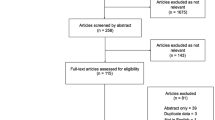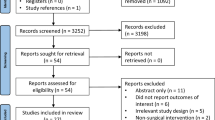Abstract
Purpose
To compare the incidence and the safety outcomes associated with active stone removal procedure (ASRP) between neurological and non-neurological patients.
Materials and methods
The present study was conducted using the data issued from the French National Health Data Base. All patients that have been hospitalized to undergo an ASRP between January 1 2012 and December 31 2018 were included and allocated to four neurological groups (multiple sclerosis, spinal dysraphism, paraplegia, tetraplegia) and one non-neurological group. The primary outcome was the rate of patients hospitalized at least once to undergo an ASRP over the study period. The secondary outcomes included the type of ASRP performed, the length of hospital stay, the rates of post-operative UTI, of early re-admission and re-treatments. Multivariate logistic regression was used to estimate odd ratios, the four neurological groups being compared to the non-neurological group.
Results
During the study period, 45,745,055 patients were hospitalised, with 151,850 of them presenting with an underlying neurological disease. Among the non-neurological patients, 0.89% underwent an ASRP, while 1.39% neurological patients did. Neurological patients presented with a lower rate of ESWL associated with a higher rate of PCNL, while the length of hospital stay, the rate of post-operative UTI, of early re-admission and of re-treatment were systematically increased (p < 0.001), when compared to non-neurological patients, regardless of the type of ASRP considered.
Conclusions
The results presented here confirm and clarify the incidence and the safety outcomes associated with ASRP within the neurological population and advocate for the emergence of a dedicated research field focusing on neuro-urolithiasis.
Similar content being viewed by others
Abbreviations
- ASRP:
-
Active stone removal procedure
- CCAM:
-
Classification Commune des Actes Médicaux
- EWSL:
-
Extracorporeal shock wave lithotripsy
- fURS:
-
Flexible ureteroscopy
- ICD 10:
-
International Classification of Disease 10
- MS:
-
Multiple sclerosis
- PCNL:
-
Per cutaneous nephrolithotomy
- PMSI:
-
Programme de Médicalisation des Systèmes d’Information
- rURS:
-
Rigid ureteroscopy
- SCI:
-
Spinal cord injury
- SD:
-
Spinal dysraphism
- UTI:
-
Urinary tract infection
References
Morgan MSC, Pearle MS (2016) Medical management of renal stones. BMJ. https://doi.org/10.1007/s11934-020-0969-2
Chugh S, Pietropaolo A, Montanari E, Sarica K, Somani BK (2020) Predictors of urinary infections and urosepsis after ureteroscopy for stone disease: a systematic review from EAU section of urolithiasis (EULIS). Curr Urol Rep 21(4):16
Michel MS, Trojan L, Rassweiler JJ (2007) Complications in percutaneous nephrolithotomy. Eur Urol 51(4):899–906
Honey RJD, Ordon M, Ghiculete D, Wiesenthal JD, Kodama R, Pace KT (2013) A prospective study examining the incidence of bacteriuria and urinary tract infection after shock wave lithotripsy with targeted antibiotic prophylaxis. J Urol 189(6):2112–2117
de Sèze M, Ruffion A, Denys P, Joseph PA, Perrouin-Verbe B, GENULF (2007) The neurogenic bladder in multiple sclerosis: review of the literature and proposal of management guidelines. Mult Scler Houndmills Basingstoke Engl 13(7):915–928
Donnellan SM, Bolton DM (1999) The impact of contemporary bladder management techniques on struvite calculi associated with spinal cord injury. BJU Int 84(3):280–285
Morhardt DR, Hadj-Moussa M, Chang H, Wolf JS, Roberts WW, Stoffel JT et al (2018) Outcomes of ureteroscopic stone treatment in patients with spinal cord injury. Urology 116:41–46
Ramsey S, McIlhenny C (2011) Evidence-based management of upper tract urolithiasis in the spinal cord-injured patient. Spinal Cord 49(9):948–954
Comarr AE (1955) A long-term survey of the incidence of renal calculosis in paraplegia. J Urol 74(4):447–452
Chen Y, DeVivo MJ, Roseman JM (2000) Current trend and risk factors for kidney stones in persons with spinal cord injury: a longitudinal study. Spinal Cord 38(6):346–353
Ramachandra P, Palazzi KL, Holmes NM, Chiang G (2014) Children with spinal abnormalities have an increased health burden from upper tract urolithiasis. Urology 83(6):1378–1382
Wang HHS, Wiener JS, Ferrandino MN, Lipkin ME, Routh JC (2015) Complications of surgical management of upper tract calculi in spina bifida patients: analysis of nationwide data. J Urol 193(4):1270–1274
Ganesan V, Chen WM, Jain R, De S, Monga M (2017) Multiple sclerosis and nephrolithiasis: a matched-case comparative study. BJU Int 119(6):919–925
Baldea KG, Blackwell RH, Vedachalam S, Kothari AN, Kuo PC, Gupta GN et al (2017) Outcomes of percutaneous nephrolithotomy in spinal cord injury patients as compared to a matched cohort. Urolithiasis 45(5):501–506
Prattley S, Oliver R, New F, Davies M, Brewin J (2019) Ureteroscopy in patients with spinal cord injury: outcomes from a spinal injury unit and a review of literature. Transl Androl Urol 8(S4):S352–S358
Wolfe T, Klausner AP, Goetz LL, King AB, Hudson T, Gater DR (2013) Ureteroscopy with laser lithotripsy for urolithiasis in the spinal cord injury population. Spinal Cord 51(2):156–160
Madec FX, Suply E, Luyckx F, Nedelec M, Chowaniec Y, Branchereau J et al (2017) Flexible ureterorenoscopy and laser lithotripsy for upper urinary tract stones in neurologic patients with severe motor disability. Prog Urol J Assoc Fran Urol Soc Fran Urol 27(6):369–374
Nabbout P, Slobodov G, Mellis AM, Culkin DJ (2012) Percutaneous nephrolithotomy in spinal cord neuropathy patients: a single institution experience. J Endourol 26(12):1610–1613
Chaudhry R, Theisen KM, Stephany HA, Schneck FX, Cannon GM, Ost MC (2017) Percutaneous stone surgery in spina bifida patients—are stone-free rates worth the risk? J Endourol 31(S1):S81–S86
Whitehurst L, Jones P, Somani BK (2019) Mortality from kidney stone disease (KSD) as reported in the literature over the last two decades: a systematic review. World J Urol 37(5):759–776
DeVivo MJ, Fine PR (1986) Predicting renal calculus occurrence in spinal cord injury patients. Arch Phys Med Rehabil 67(10):722–725
Aydin G, Demir SÖ, Ekiz T, İnanir M, Tosun A (2017) Comparison of biochemical parameters of blood and urine in spinal cord injury patients and association with urinary stone formation. J Back Musculoskelet Rehabil 30(5):1111–1115
Veenboer PW, Ruud Bosch JLH, van Asbeck FWA, de Kort LMO (2013) Urolithiasis in adult spina bifida patients: study in 260 patients and discussion of the literature. Int Urol Nephrol 45(3):695–702
Buisson G (2005) Redressements du Programme de Médicalisation des Systèmes d’Informations PMSI, p 28 - SERIE STATISTIQUES - DOCUMENT DE TRAVAIL - DREES. No 80
Boudemaghe T, Belhadj I (2017) Data resource profile: The French National Uniform Hospital Discharge Data Set Database (PMSI). Int J Epidemiol 46(2):392
Goldberg M, Carton M, Gourmelen J, Genreau M, Montourcy M, Le Got S et al (2016) The opening of the French National Health Database: opportunities and difficulties the experience of the Gazel and Constances cohorts. Rev Epidemiol Sante Publ 64(4):313–320
Goldberg M, Coeuret-Pellicer M, Ribet C, Zins M (2012) Epidemiological studies based on medical and administrative databases: a potential strength in France. Med Sci (MS) 28(4):430–434
Funding
The authors did not receive support from any organization for the submitted work. All authors certify that they have no affiliations with or involvement in any organization or entity with any financial interest or non-financial interest in the subject matter or materials discussed in this manuscript.
Author information
Authors and Affiliations
Contributions
FB: project development, manuscript writing and editing. GC: data collection. XL: statistical analysis. XB: project development, manuscript editing, supervision.
Corresponding author
Ethics declarations
Conflict of interest
I hereby, Florian BERAUD, MD, declare that I have the full approval of my esteemed colleagues, and that I do not have any competing interests. This work is an original article that is not submitted, nor published elsewhere.
Research involving human and animal rights
We did not make any research involving human participants nor animals.
Informed consent
No informed consent was required, we only used anonymized administrative retrospective data.
Additional information
Publisher's Note
Springer Nature remains neutral with regard to jurisdictional claims in published maps and institutional affiliations.
Supplementary Information
Below is the link to the electronic supplementary material.
Rights and permissions
About this article
Cite this article
Beraud, F., Clément, G., Lenne, X. et al. Incidence and safety outcomes associated with active stone removal procedures (ASRP): a comparison between neurological and non-neurological patients using the French National Health Data Base. World J Urol 40, 1821–1827 (2022). https://doi.org/10.1007/s00345-022-04054-8
Received:
Accepted:
Published:
Issue Date:
DOI: https://doi.org/10.1007/s00345-022-04054-8




